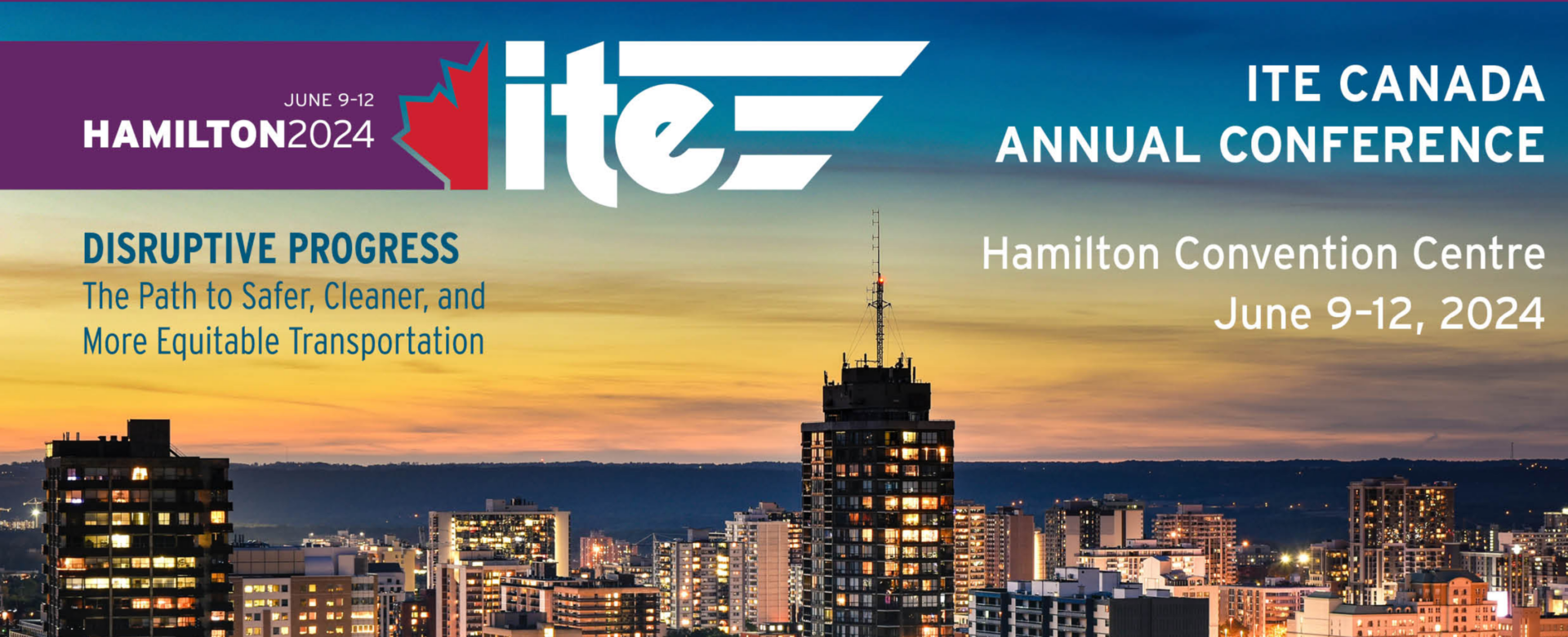Conference / Intersections / signaling / Traffic safety
Mobycon at ITE Canada 2024 Annual Conference!
From June 9-12, the Institute of Transportation Engineers (ITE) Canada Conference will be taking place in Hamilton, Ontario. This year, Mobycon’s Narayan Donaldson will be giving a presentation on six Dutch traffic signal operations strategies that should be implemented in Canada.

Narayan Donaldson presents six traffic signal operations practices which can improve safety and convenience for active modes and public transit while maintaining efficient motor traffic operations. While these practices are nearly universal at signalized intersections across the Netherlands, they are uncommon or non-existent in Canada.

Strategies to Improve Multimodal Traffic Signal Operations
Session: 6B – Signals Symposium
Speaker: Narayan Donaldson
Tuesday, June 11 @ 15:30-16:00 EDT
The standard practice for traffic signal operations in North America is based on a typical North American intersection that includes motor vehicle signals for through and, potentially, left turn traffic, and single-stage crosswalks for pedestrians. In recent years, with a rise in interest in sustainable transportation modes such as cycling and walking, and an increased emphasis on safety, intersections are increasingly including additional features such as fully-protected right turn signals, bicycle signals, transit signals, and/or leading pedestrian/bicycle intervals. However, North American signals are poorly equipped to efficiently operate such complex intersections.
Fully-protected signal phases improve safety for vulnerable road users at busy intersections, but Canadian engineers are typically reluctant to implement them due to the impacts they can have on road user delay. Meanwhile, in the Netherlands, fully-protected phases are the norm. Part of this difference is due to a greater prioritization of safety over vehicle delay, but a large part is due to the efficiency of fully-protected phases in the Netherlands.
Whereas Canadian phase control structures treat fully-protected signal phases similar to phases with permissive conflicts, Dutch practices take advantage of the independence between fully-protected phases to improve signals’ responsiveness to real-time detection and reduce cycle lengths. Six key practices are used to improve signal efficiency:
- Calculating separate red clearance times per pair of conflicting phases
- Greater flexibility in phase control structures
- Multi-stage pedestrian crossings with pedestrian green waves
- Fully-actuated control
- Extensive vehicle detection
- Peer-to-peer communication between intersections
While a focus on signal efficiency may seem contrary to Vision Zero ideology – which places safety above efficiency – at signalized intersections, road user safety is completely dependent on user compliance. Minimizing user frustration with signals (such as users being stopped at red signals for no apparent reason) can improve safety by restoring respect between road users and traffic signals.
The ITE Canada 2024 Conference will be held in Hamilton, Ontario, Canada June 9-11. For more information about programming and registration, see their website here.
If you are also attending the ITE conference, want to learn more about traffic signals, or want to help create opportunities in your community, reach out!
 ">
">Narayan Donaldson
“So many of the world’s challenges, from climate change, to public health, to wealth inequality, have the potential to be alleviated through changes to transportation systems. That is what underlies my passion for implementing sustainable, safe and equitable transportation solutions.”

